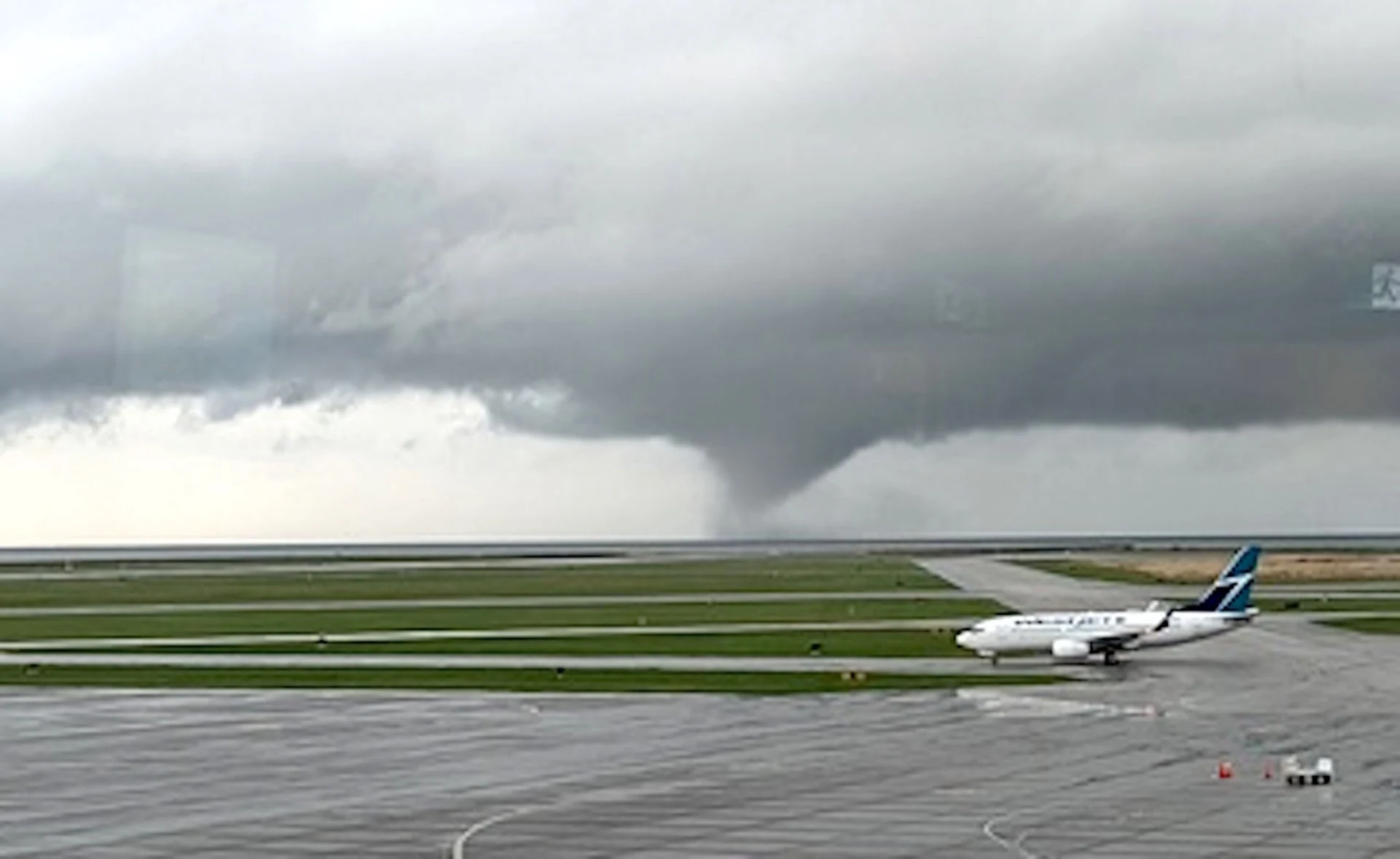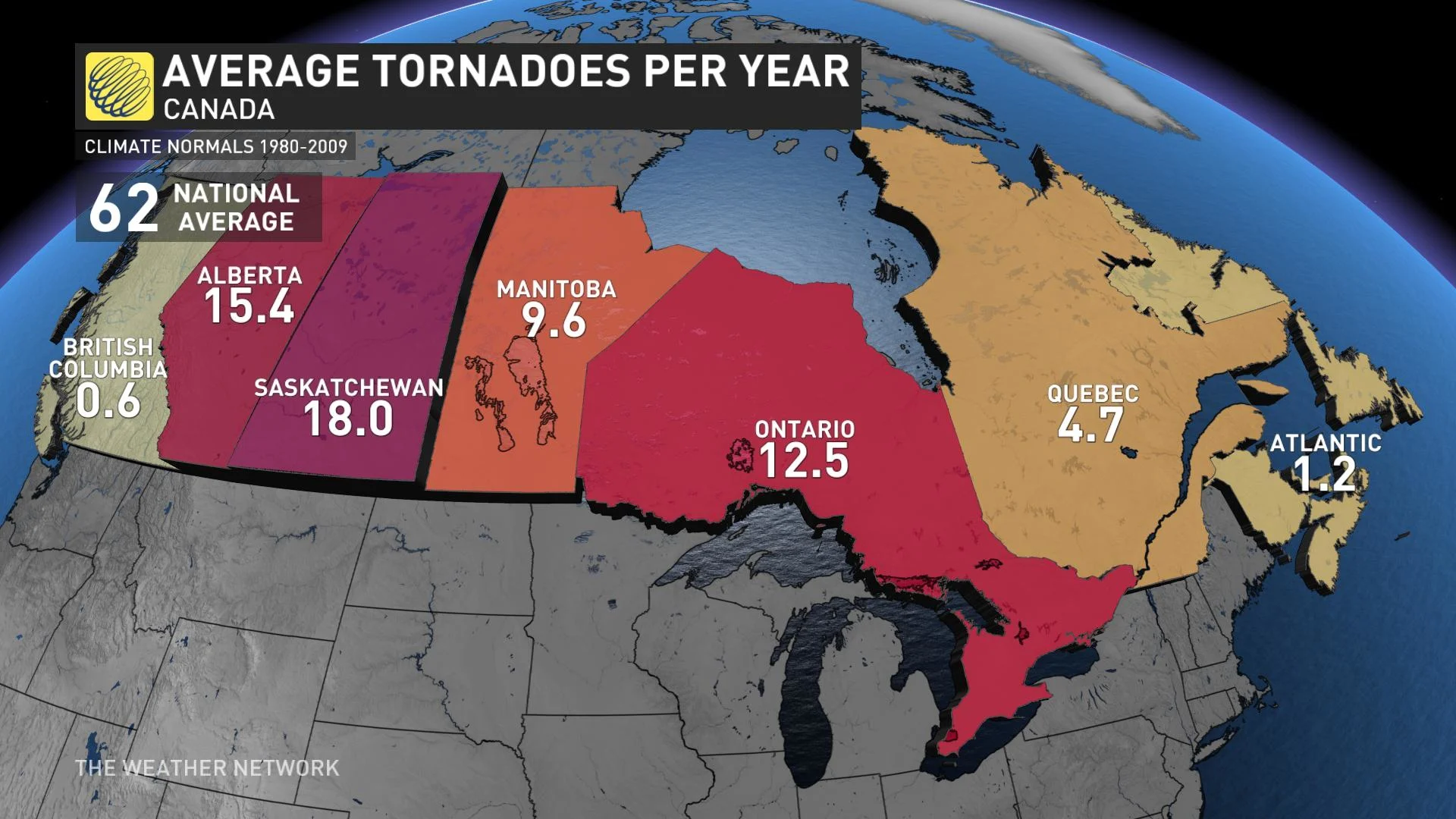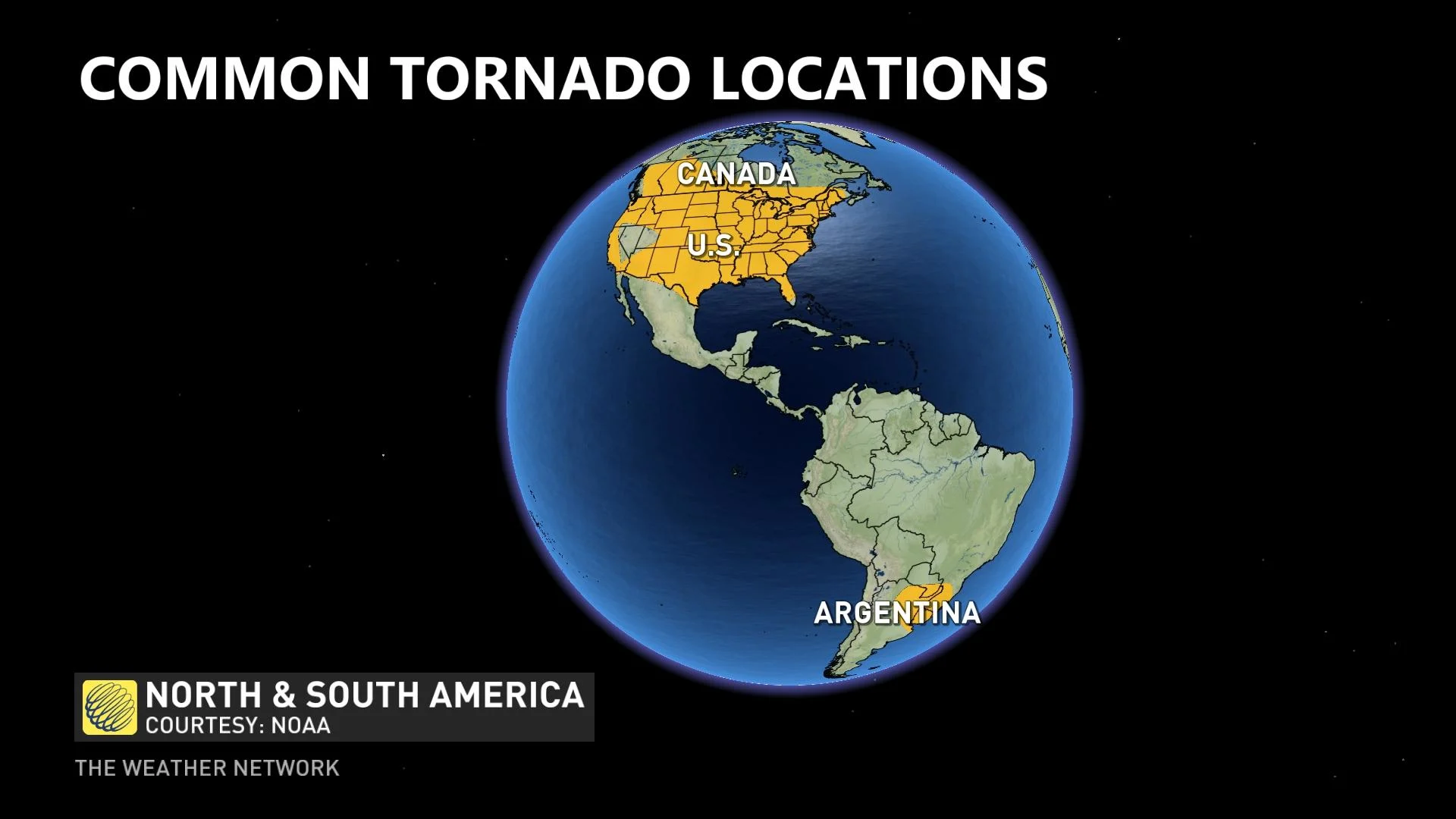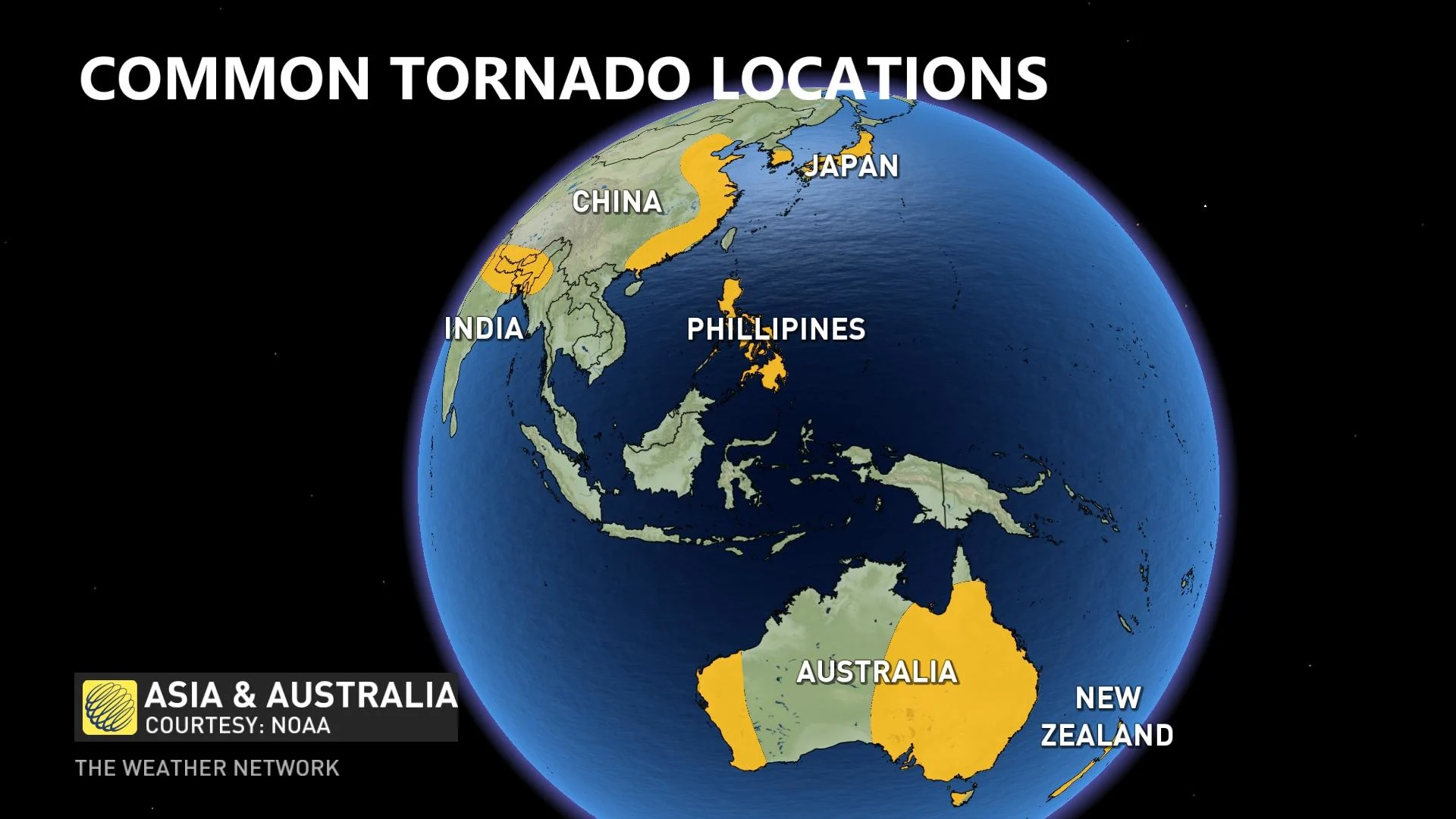
Tornadoes can happen anywhere—and cities aren't immune
Some parts of the world are more prone to tornadoes than others, but there’s just about nowhere on the planet completely immune to twisters
Stick around any town long enough during storm season and you'll probably hear a bit of local lore about how the community is protected from twisters.
“They just can’t happen around here,” the legends will insist, attributing this alleged immunity to rivers, mountains, or even tall buildings that disrupt a thunderstorm and stifle any attempt to spawn a tornado.
Unfortunately, those myths aren’t just wrong—they’re flat out dangerous.
Tornadoes are possible just about anywhere on Earth given the right conditions. Some areas are more prone to twisters than others, but we’ve seen formidable tornadoes touch down in areas where it didn’t seem like they could ever hit.
DON’T MISS: Don’t fall victim to these seven dangerous tornado myths
Tornadoes can and do strike cities
Tens of thousands of spectators filled the Georgia Dome on the night of March 14, 2008, gripped by the tension of a college basketball tournament game thrown into overtime.
As the teams duked it out on the court, the roof above the packed stadium began to shudder against the winds of an EF-2 tornado barreling through downtown Atlanta.
If the game hadn’t gone into overtime, those fans would’ve headed outside just as the powerful tornado hit, pelting them with twisted metal, shattered glass, and furniture sucked out of skyscrapers that all poured onto the streets below.
The tornado that hit Atlanta during that early spring outbreak back in 2008 was one of dozens of examples of tornadoes striking big cities over the past couple of decades.
The lengthy list includes Brooklyn, New York; Washington, D.C.; Miami, Florida; Salt Lake City, Utah; Nashville, Tennessee, on more than one occasion; Guangzhou, China; Yancheng, China; and Birmingham, England.
No recorded tornadoes have directly hit the downtown core of a major Canadian city, though tornadoes have come very close to several cities, including Vancouver in 2021 and an infamous and destructive F4 twister in eastern Edmonton back in July 1987.
A common myth among folks who live in cities is that tornadoes are somehow repelled from urban areas by the density of the region, that block after block of skyscrapers will disrupt the rotation and force a tornado to dissipate.
It’s simply not true.
Tornadoes tend to miss dense urban cores out of simple luck. City centres are relatively small targets, and most tornadoes are relatively small whirlwinds. The odds a single tornado will hit any one point are usually pretty tiny, but the odds are never zero.
As we’ve seen in cities around the world, it only takes one tornado hitting one city to lead to a tragedy. And the odds of tornadoes hitting densely populated areas will only increase as metropolitan areas throughout Canada, the U.S., and around the world expand with suburban growth.
Rivers, lakes, and oceans don't do much to stop tornado development, either. Tornadoes easily bound across rivers and streams without so much as a hiccup, and it's common to see tornadoes form over and near larger bodies of water.
WATCH: Here's why Vancouver had a rare tornado in 2021
Tornadoes are possible in Canada from coast to coast
One of the biggest misconceptions about tornado safety in Canada is that folks are ‘safe’ depending on where they live. Over just the past couple of years, we’ve seen tornadoes bounce across the Canadian landscape from the shores of Vancouver to the rolling farms of Nova Scotia. Several tornadoes have even been reported as far north as the Northwest Territories.
Thunderstorms require multiple ingredients coming together just right in order to spawn a tornado. Thankfully, it’s relatively rare for storms to achieve that feat even when conditions are favourable for twisters to form.

MUST SEE: Stuck in your car during a tornado? Here’s what you should do
There are parts of the country where these variables—strong lift, sticky humidity, ample wind shear, plenty of storm energy—are more common, such as the Prairies and southern Ontario.
But tornadoes aren’t confined to these regions. Occasionally, dynamics will line up just right to allow storms to rotate just about anywhere, even down near the coast, high in the mountains, or up near the Arctic Circle.
It’s a compelling reason to prepare for severe weather and run through the “what ifs” in the unlikely event one of those offbeat cells threatens a community that usually doesn’t deal with such stormy weather.
Each continent has its own tornado alley
The United States leads the world in annual tornado counts with more than 1,000 touchdowns recorded in an average year.
Canada comes in second place, averaging somewhere around 60 reported tornadoes a year. The true number is surely higher, though, since so much of the country is unpopulated and some twisters likely go unnoticed and unrecorded.

But while the American Plains and Canadian Prairies form Tornado Alley, there are many lower-case tornado alleys throughout the world.
These global tornado hotspots require regular low-pressure systems moving across the region to spark thunderstorms and provide wind shear, and a nearby source of warm, humid air to fuel the storms to their full potential.
Tornadoes happen just about anywhere in Europe. The European Severe Storms Laboratory documented more than 4,400 tornadoes across the continent between 2010 and 2023.

A few regions in Europe are susceptible to supercell thunderstorms that can produce large and violent tornadoes. Particularly destructive tornadoes have occurred in northeastern Italy inland from Venice, as well as large swaths of Germany, Poland, and Hungary.
Asia experiences tornadoes on a regular basis, especially when typhoons roll into The Philippines, Taiwan, and Japan. Eastern China occasionally witnesses severe weather outbreaks that spawn destructive tornadoes.
The topography of Bangladesh and northeastern India exposes the region to some of the most violent severe storms outside of North America. Moist winds streaming in from the Bay of Bengal have fuelled several catastrophic twisters in Bangladesh in the past few decades, including one that may have killed more than 1,000 people back in 1989.
Supercells that form north of the Bay of Bengal can also produce mammoth hailstones the size of baseballs or larger, which is no small hazard considering the region's population density.

Down in the southern hemisphere, southeastern South America is vulnerable to violent severe weather outbreaks that can produce strong tornadoes. The Pampas, which covers parts of Argentina, Uruguay, and Paraguay, is similar in climate and topography to the North American Plains.
Similar dynamics can lead to localized tornado outbreaks across interior South Africa, as well as large swaths of both western and eastern Australia.
Thumbnail image of the 2021 Vancouver tornado courtesy of Shane Sidsworth.











